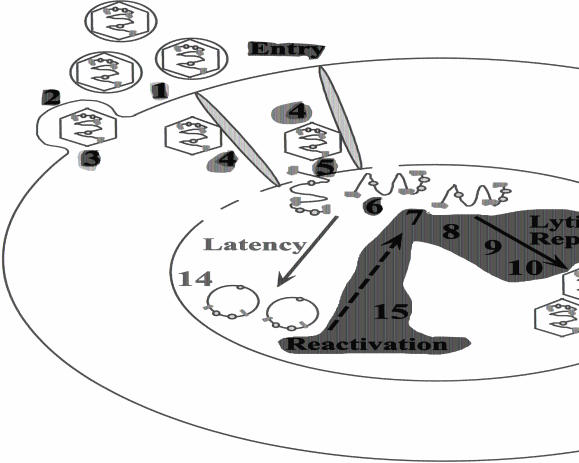Figure 4.
Lytic and latent HSV-1 infection. The lytic HSV-1 life cycle takes ∼18 hours and the steps include: 1) attachment to heparan sulfate and cell-surface receptors; 2) fusion of the virion envelope with the plasma membrane; 3) release of the capsid into the cytoplasm and 4) active transport along microtubules to the nuclear pores with 5) release of the virion DNA into the nucleus; 6) α-TIF mediated induction of transcription of IE genes; 7) transcription of IE and E genes; 8) viral DNA synthesis; 9) transcription of L genes; 10) capsid assembly; 11) DNA packaging into preformed capsids; 12) capsid envelopment; and 13) virion egress. In sensory neurons, HSV-1 may enter a state of latency 14), which is characterized by the persistence of the HSV-1 genome as a concatemeric or circular molecule bound by nucleosomes that does not express viral genes other than the latency associated transcripts. Host cell, viral and external factors play a role in establishment and reactivation 15) of HSV-1 from latency.

